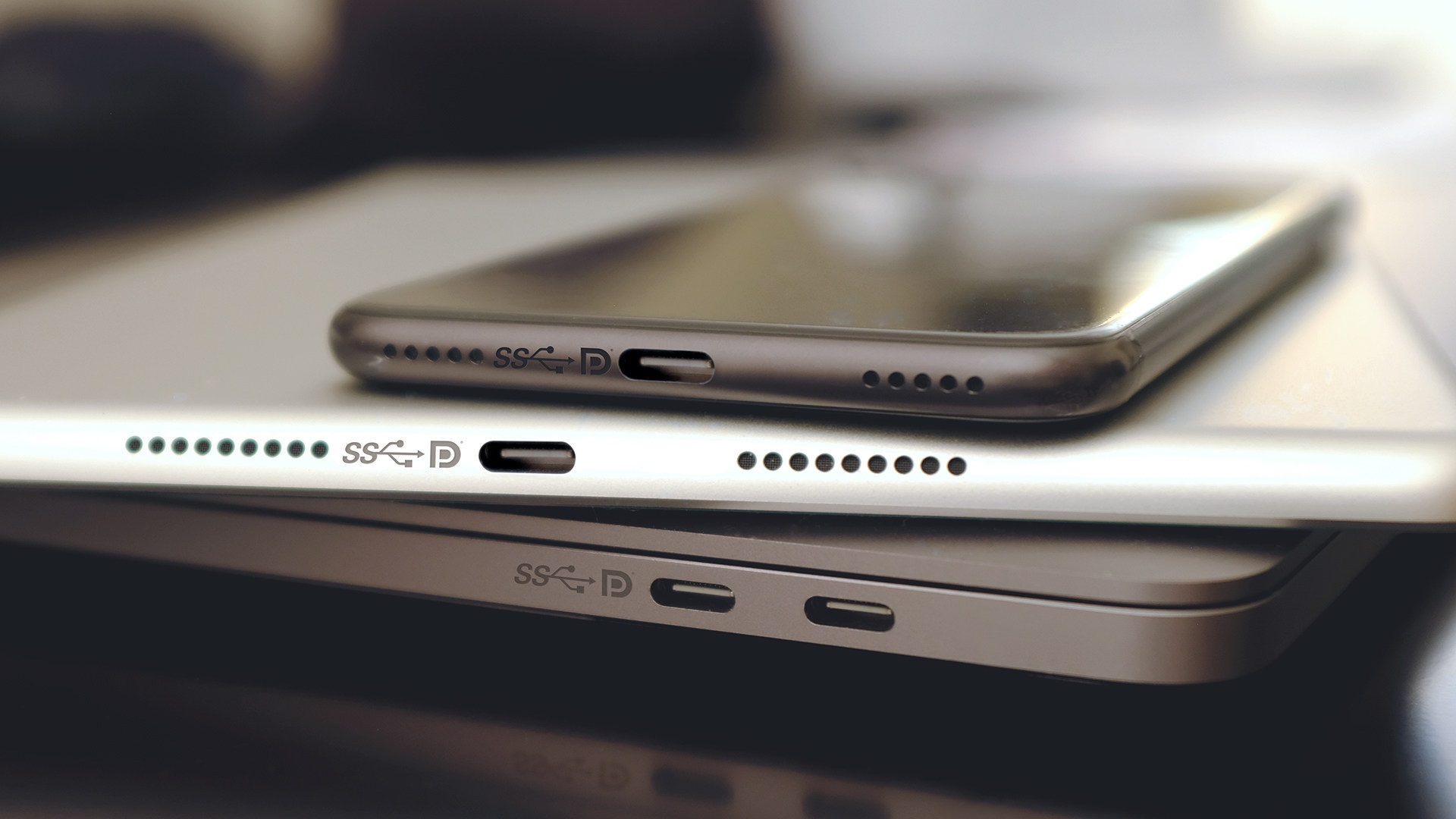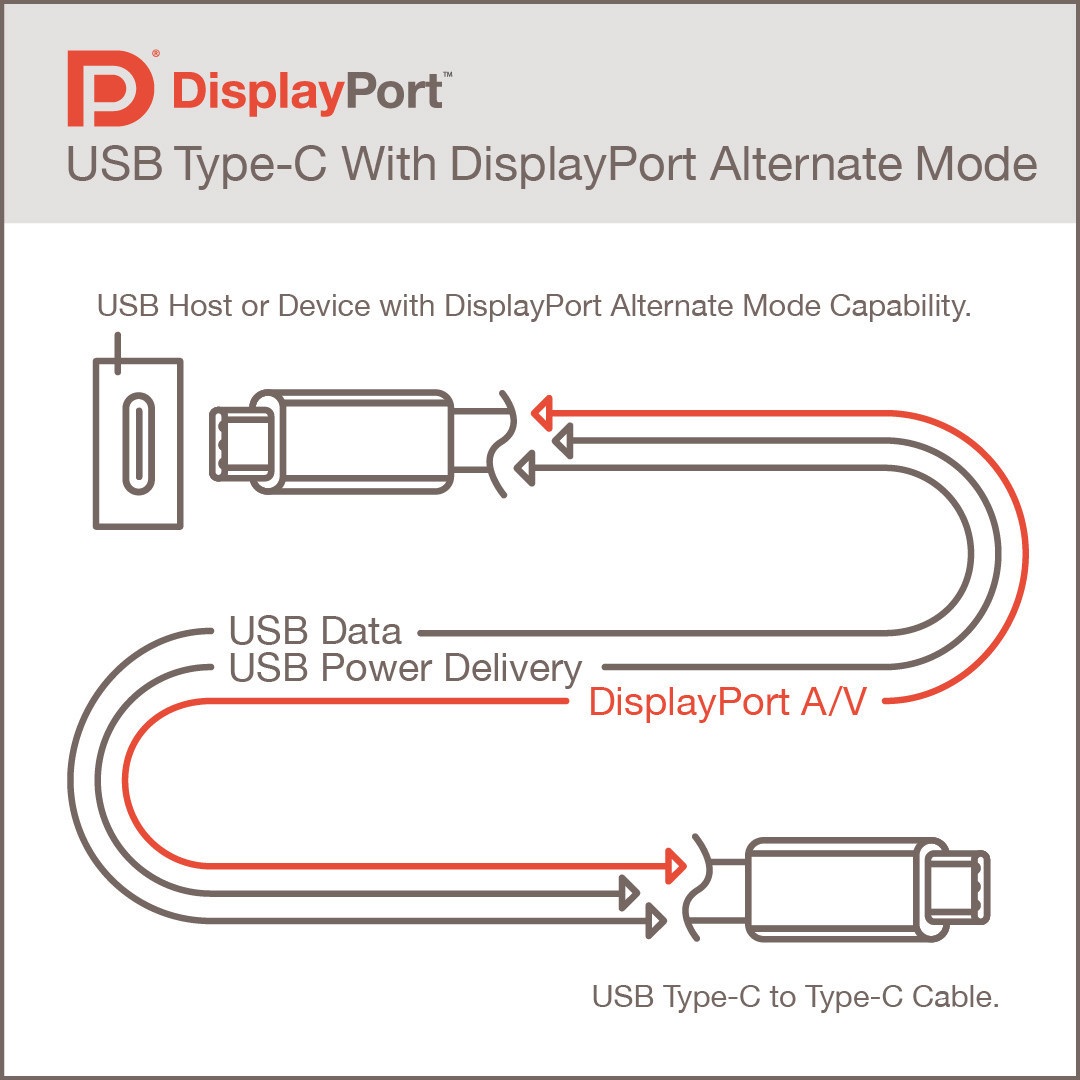USB4 Will Offer DisplayPort 2.0 Alt Mode With Support for 16K Displays
In a few years, you'll be able to drive a 16K monitor at 60 Hz over a single USB Type-C cable.

USB Type-C is an inherently confusing standard, but USB4 is set to fix those issues, reeling in Thunderbolt 3 and, as per today's announcement, DisplayPort 2.0 Alt Mode. Today, VESA, the Video Electronics Standards Association, announced that it updated its DisplayPort Alternate Mode spec to version 2.0.
"USB Type-C is becoming the connector of choice in notebooks and mobile solutions" Syed Athar Hussain, VESA board vice-chairman, said in a statement. "With the new DisplayPort Alt Mode 2.0 specification, USB Type-C now delivers compelling single-connector solutions for docking, gaming, AR/VR HMDs and professional HDR displays that combine 80 Gbps of video bandwidth and other important features of DisplayPort 2.0 with the transport of USB data and power delivery."
DisplayPort Alt Mode is essentially an internal mechanism that allows users to connect a display to USB Type-C ports. This is already possible on today's existing DisplayPort Alt Mode connectors, but the upgrade to DisplayPort 2.0 will mean support for much higher resolution displays, higher refresh rates and greater color, which is especially helpful with the advancements in HDR.
When used by itself, DisplayPort 2.0 Alt mode will enable a throughput of up to 80 Gbps, or 40 Gbps when used in conjunction with SuperSpeed USB. For comparison, USB 3.2 Gen 2x2, the fastest USB standard available today, has a bandwidth of 20 Gbps, and Thunderbolt 3 can churn through 40 Gbps. At 80 Gbps, DisplayPort 2.0 will be good for driving a single 16K display -- that's right, 15360 x 8640 resolution -- at 60 Hz with 30 bits per pixel (bpp) color, which would be quite something to behold. The current DisplayPort Alt Mode supports up to 8K (7680 × 4320) resolution.
- How to pick the best HDR monitor
- The best gaming monitors we've tested
Of course, 16K support is more future-proofing. Shoppers know that the best 4K gaming monitors are still pretty expensive. And while 4K TVs are getting more commonplace, we're far from a 16K display becoming mainstream. Samsung has only dabbled with a very pricey 16K TV, and we're not even going to get into the sort of graphics capability you'd need to hypothetically game at such a resolution.
VESA is currently working with USB-IF, which makes the USB4 spec, to bring "seamless integration" with USB4, according to Craig Wiley, senior director of marketing at Parade Technologies, VESA board member and DisplayPort Alt Mode sub-group leader.
"Through our latest collaboration with the USB-IF, VESA is now taking care of everything related to high-performance displays over USB-C, whether through a native DisplayPort or USB-C connector or through tunneling of DisplayPort over the native USB4 interface," Wiley said. "DisplayPort is also tunneled through the Thunderbolt interface, making it the de facto video standard across PC and mobile displays."
Get Tom's Hardware's best news and in-depth reviews, straight to your inbox.
VESA expects the new standard to first come to devices in 2021, though you can count on mass adoption arriving later than that. Apple, for example, is only expected to embed USB4 to its devices in 2022.
Niels Broekhuijsen is a Contributing Writer for Tom's Hardware US. He reviews cases, water cooling and pc builds.
-
Gurg I like the 28" 4k AOC monitor purchased ($349) roughly six years ago and the detail it provides. More frame rates and faster than 60hz refresh would be a good thing though.Reply
With my 4k 55" TV I can already see the makeup lines, wrinkles, dental status, pink/purple lipsticked Outlander stars, age spots, nose/ear hairs, and every blemish on head/torso shots of people on TV. I'm not sure my brain could stand the move to 16K and all the cognitive dissonance that would create. -
cryoburner ReplyIn a few years, you'll be able to drive a 16K monitor at 60 Hz over a single USB Type-C cable.
Something tells me there won't be any 16K monitors available in a "few years", at least not on the consumer market. Even in 10+ years it seems questionable. How useful are such resolutions going to be as a monitor?
At this time, there doesn't seem to be all that much benefit provided by resolutions above 4K, and at typical screen sizes and viewing distances, even 4K can often be a bit overkill. 8K has 4 times the pixels of 4K. 16K has 16 times the pixels, or the equivalent of 64 1080p screens.
A person with 20/20 vision should have difficulty discerning the individual pixels of a 35" 4K display from about 2ft (60cm) away, so any further viewing distance or smaller screen size than that can be considered a bit wasteful. For televisions, that would be about a 70" screen viewed from 4ft. 8K is good for a 70" screen viewed from 2ft, which makes even that resolution kind of impractical. An 8K monitor would need to be a curved display forming a half-circle around the viewer for its resolution to be properly utilized. I guess 16K might be good for wrapping the viewer in a complete sphere? : P
Really, throwing more pixels at displays seems largely unnecessary at this point. Of course, there are already companies pushing 8K televisions at consumers with huge price premiums, but hopefully most will realize that they don't look any sharper than 4K screens when viewed from a usable distance, even assuming 8K content were available, making the feature largely redundant.

